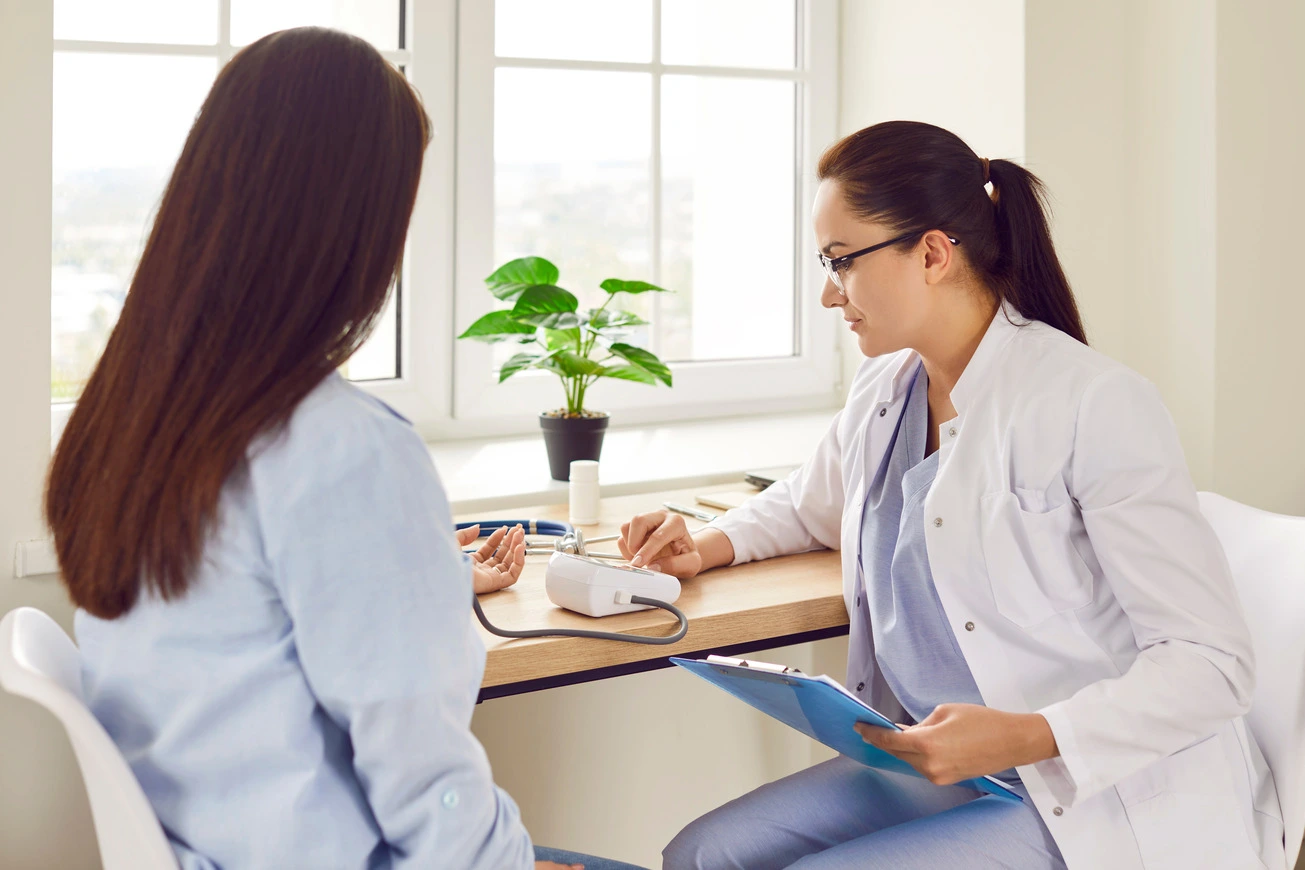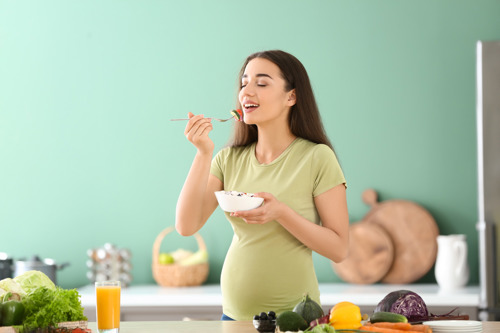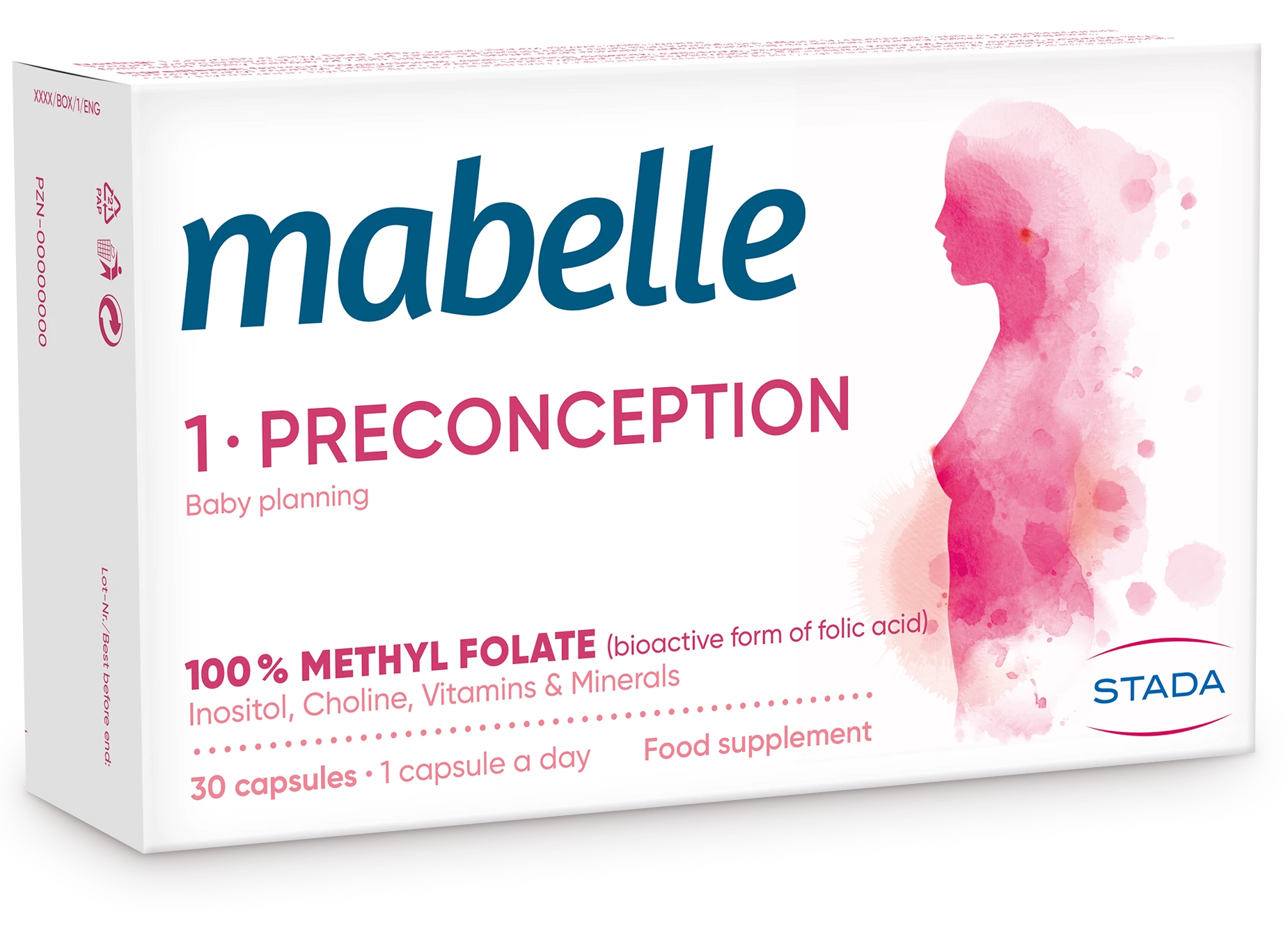Blog post from February 29
Baby planning
A guide to easy and healthy conception
Are you planning a baby? A guide to successful and healthy conception
You can read a lot of both expert information and old wives' tales about successful conception. However, one thing is certain - if you are planning to get pregnant, it is important to prepare your body and mind for pregnancy in advance. How should you prepare and what should be included in your pregnancy meal plan? When is a woman most fertile and what early symptoms can be a sign that you have managed to get pregnant?
How to prepare for pregnancy?
A great first step on the road to getting pregnant is a medical checkup with a doctor, which can greatly increase the likelihood of a healthy conception. Your doctor can check that all your vaccinations are up to date, advise you on stopping contraception or inform you about the appropriateness of certain medications.

Preparing for pregnancy should also include lifestyle adjustments to make your body the best environment for the healthy development of your baby. If you are planning to get pregnant, you should start preparing at least three months in advance.
Lifestyle changes and pregnancy diet plan
Lifestyle changes before a planned pregnancy consist mainly in a varied and balanced diet and regular exercise. The diet before and during pregnancy should be rich in vegetables, proteins, cereals, and fruits. You should also make sure you get enough folic acid. Regular exercise and maintaining an optimal weight before and during pregnancy are also advisable. Alcohol, smoking, toxic and chemical substances should of course be avoided.

Dietary supplements before pregnancy
A healthy and successful conception can be achieved also by taking certain dietary supplements that are specifically designed for women who are trying to conceive. These include, for example, the dietary supplement Mabelle, which, among other things, prevents the risk of dangerous folic acid deficiency. Folic acid in particular should be taken at least 4 weeks, but ideally 3 months, before you plan to conceive.
Do you know your fertile window?
The likelihood of pregnancy increases based on what part of the menstrual cycle the intercourse occurs.
You can conceive about 5 days before and 2 days after ovulation, the highest probability is of course during ovulation, which lasts about 1 day. On the other hand, conception is least likely during the so-called infertile days, i.e. all the other days of the month.
Calculation and symptoms of ovulation
Your fertile window is tied to ovulation. The standard cycle lasts 28 days and is counted from the first day of menstrual bleeding. Ovulation occurs around day 14 of the cycle, so fertile days fall on days 11 to 15 of the cycle. However, it all depends on the regularity of the cycle, and the signs of ovulation may appear sooner, or later.
Fertile window is manifested by several physical changes that you can observe in yourself. These include an improvement in your sense of smell, changes in saliva composition, an increase in libido, pain in the lower abdomen or an increase in the sensitivity of the body, especially in the breasts. These symptoms can therefore tell you that your cycle is in the fertile phase. However, there are more accurate methods to detect your fertile window:
-
Basal temperature measurement: Fertile days are manifested by an increase in basal temperature. Normally, the basal temperature is around 36.3 to 36.7 °C, just before ovulation it rises to 37 °C and remains elevated during the fertile days, followed by a drop. Basal temperature should ideally be measured in the morning. You can use a digital oral thermometer or a special thermometer for basal temperature measurement.
-
Ovulation tests: Another way to reliably detect fertile days is through ovulation tests, which work very similarly to pregnancy tests. You can choose between saliva ovulation tests or urine ovulation tests.

The first signs of pregnancy
Early pregnancy symptoms may appear even before a test confirms the pregnancy. Some of them include fatigue, frequent urges to urinate, breast tenderness, pregnancy cravings, a metallic taste in the mouth, and morning sickness.
Calculation of the date of delivery
Do you want to find out when you can expect the arrival of the baby? The easiest way is to use one of the due date calculators. Simply enter the first day of your last period and the length of your cycle in days into the calculator (it is usually assumed that the cycle length is 28 days, but some women's cycles do not last exactly 28 days).
Sources:
-
https://www.hopkinsmedicine.org/health/wellness-and-prevention/planning-a-pregnancy
-
https://health.clevelandclinic.org/how-to-prepare-your-body-for-pregnancy
-
https://www.nhs.uk/pregnancy/finding-out/due-date-calculator/
-
https://www.medicalnewstoday.com/articles/safe-days-for-not-getting-pregnant
-
https://www.healthline.com/health/pregnancy/basal-body-temperature
-
https://www.drmax.cz/clanky/ovulace-vypocet-terminu-priznaky-a-plodne-dny
-
https://www.parents.com/getting-pregnant/trying-to-conceive/ready-set-conceive/
-
https://www.benu.cz/jsem-v-tom-jak-poznat-prvni-priznaky-tehotenstvi

0 reviews
mabelle 1 · PRECONCEPTION
Prepares your body for the increased demand for important substances that you will need during the pregnancy. Supports a… read more [+]
Prepares your body for the increased demand for important substances that you will need during the pregnancy. Supports a healthy conception and then development of your baby.
Supplementation with folic acid is recommended to all women before and during pregnancy to reach a protective folate level in order to reduce risk factors of baby’s neural tube defects.







